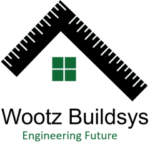
The construction industry is witnessing a major shift towards faster, cleaner, and more efficient building techniques. Among these, Drywall Construction has become one of the most preferred choices for modern architects, contractors, and developers. Whether in residential homes, offices, schools, or commercial complexes, drywall has revolutionized interior construction by replacing traditional brick and plaster walls with lightweight, durable, and sustainable alternatives.
But what exactly is drywall construction? How does it work, and what makes it such a game-changer in today’s building industry? Let’s explore everything you need to know — from the process and benefits to its wide-ranging applications.
What Is Drywall Construction?
Drywall Construction refers to the method of building internal walls and ceilings using prefabricated boards made from gypsum plaster pressed between two thick sheets of paper or fiber. These boards, commonly known as gypsum boards, plasterboards, or wallboards, are mounted on a lightweight metal or wooden frame to form partition walls, ceilings, or wall linings.
Unlike conventional construction methods that rely on bricks, cement, and sand, drywall construction requires no water for installation, earning it the nickname “dry construction.” It’s quick, clean, and versatile — perfect for the fast-paced demands of modern architecture.
Drywall is available in several types, such as:
- Regular Drywall: Used for general partitions and ceilings.
- Moisture-Resistant Drywall: Ideal for bathrooms and kitchens.
- Fire-Resistant Drywall: Used in industrial buildings or fire-rated walls.
- Soundproof Drywall: Reduces noise transmission between rooms.
The Drywall Construction Process
One of the main reasons drywall construction is becoming popular is its simple and systematic process, which saves time and labor. Here’s how it typically works:
1. Design and Layout Planning
The process begins with layout drawings that define where partitions or ceilings will be placed. The design considers dimensions, load requirements, and the type of drywall to be used.
2. Frame Installation
A metal (usually light gauge steel) or wooden framework is fixed to the floor, ceiling, and walls to create a skeleton structure. This frame determines the shape and size of the wall or ceiling.
3. Drywall Sheet Fixing
Pre-cut drywall boards are screwed or nailed onto the frame. The boards fit tightly together, and the joints between them are sealed with joint tape and compound for a smooth surface finish.
4. Finishing and Surface Treatment
Once the joints and edges are sealed, the surface is sanded and finished. It can then be painted, wallpapered, or decorated — just like a traditional wall.
5. Optional Insulation and Services
Before sealing the drywall, spaces within the frame can be filled with thermal or acoustic insulation materials. Electrical conduits, plumbing, and HVAC ducts can also be installed within the cavity.
This systematic, dry, and efficient process allows entire rooms or floors to be completed in a fraction of the time compared to traditional masonry work.
Benefits of Drywall Construction
Drywall construction offers a range of benefits that make it a superior choice for both residential and commercial projects.
1. Faster Construction Time
Since there’s no need for curing or drying, drywall construction reduces project timelines by up to 60–70%. This is especially useful in commercial and hospitality projects where time directly affects profitability.
2. Lightweight and Space-Efficient
Drywall structures are significantly lighter than traditional brick walls, which reduces the building’s overall load and foundation costs. The slim partitions also save valuable floor space — a key advantage in urban projects.
3. Superior Finishing Quality
Drywall provides a smooth, even surface that’s ideal for painting, wallpaper, or decorative finishes. Unlike cement plaster, it doesn’t crack or shrink, ensuring long-lasting aesthetics.
4. Versatility in Design
Whether it’s curved walls, false ceilings, or multi-level interiors, drywall construction can easily accommodate modern architectural designs. The flexibility of the framework allows for creative and dynamic interiors.
5. Thermal and Acoustic Insulation
Drywall systems can be enhanced with insulation materials to improve energy efficiency and soundproofing. This helps maintain comfortable indoor temperatures and reduces noise transfer — essential for offices, hotels, and schools.
6. Fire and Moisture Resistance
Specialized drywall boards are available with fire-retardant or moisture-resistant properties, making them suitable for industrial areas, kitchens, and bathrooms. These systems comply with stringent fire-safety standards and improve building safety.
7. Eco-Friendly and Sustainable
Drywall construction promotes sustainability by minimizing water usage and material waste. Gypsum, the main component, is a naturally occurring and recyclable material, supporting eco-conscious building practices.
8. Ease of Maintenance and Repair
Repairing a damaged drywall section is quick and inexpensive. Panels can be replaced individually without disturbing the entire structure — saving both time and cost.
Applications of Drywall Construction
Drywall construction is used across diverse sectors due to its adaptability and efficiency. Here are some of the most common applications:
1. Residential Buildings
Homeowners use drywall for interior walls, ceilings, and decorative false ceilings. It’s perfect for creating partitions between rooms or renovating spaces without major structural work.
2. Commercial Spaces
In offices, retail stores, and malls, drywall partitions provide flexible layouts that can be easily modified or expanded in the future.
3. Educational Institutions
Schools and colleges use drywall systems for classrooms, auditoriums, and laboratories, ensuring better acoustics and comfort.
4. Healthcare Facilities
Hospitals and clinics benefit from drywall’s smooth, hygienic surfaces and the ability to incorporate fire- and moisture-resistant boards for safety and cleanliness.
5. Hospitality Sector
Hotels and restaurants prefer drywall construction for its premium finish, quick installation, and excellent soundproofing — all vital for guest comfort.
6. Industrial Buildings
Factories, warehouses, and cleanrooms use drywall partitions for non-load-bearing walls, office cabins, and controlled environments.
Drywall Construction vs Traditional Construction
| Feature | Drywall Construction | Traditional Construction |
| Speed | 3–5 times faster | Slow due to curing and drying |
| Weight | Lightweight | Heavy load on structure |
| Water Usage | No water required | High water consumption |
| Finishing | Smooth, crack-free | Requires multiple coats of plaster |
| Flexibility | Highly flexible | Difficult to modify |
| Waste Generation | Minimal | High material wastage |
| Sustainability | Eco-friendly | Resource-intensive |
Clearly, drywall construction offers significant advantages for modern infrastructure where speed, quality, and sustainability are top priorities.
Challenges of Drywall Construction
While drywall offers numerous benefits, it’s not without challenges:
- Vulnerability to Impact: Standard drywall can dent or puncture under force, though high-impact boards are available.
- Moisture Sensitivity: In humid areas, special moisture-resistant boards must be used to prevent mold growth.
- Skilled Installation Required: Poor installation can lead to joint cracks or uneven surfaces. Hiring trained professionals ensures the best results.
Despite these challenges, technological advancements and growing awareness are helping drywall construction gain rapid acceptance in India and worldwide.
The Future of Drywall Construction in India
With India’s growing demand for fast-track, affordable, and sustainable construction methods, Drywall Construction is poised to become a standard practice in the coming years. The shift toward green building certifications (like IGBC and LEED) further boosts its relevance, as drywall systems contribute points for sustainability, efficiency, and recyclability.
As urbanization continues, the need for flexible, modular, and lightweight construction systems will only grow — and drywall fits perfectly into that vision. From luxury apartments to affordable housing, from hospitals to offices, Drywall Construction is redefining how buildings are designed and built in modern India.
Conclusion
Drywall Construction represents the evolution of modern building practices — combining speed, precision, sustainability, and design freedom. Its ability to reduce project time, improve energy efficiency, and deliver superior aesthetics makes it an ideal alternative to conventional construction.
For developers, architects, and homeowners seeking a clean, efficient, and sustainable solution, drywall construction isn’t just an option — it’s the smarter way forward.
FAQs on Drywall Construction
1. What is the main material used in drywall construction?
The primary material is gypsum plaster, sandwiched between two layers of paper or fiberglass to create strong, smooth panels.
2. Is drywall construction suitable for Indian weather conditions?
Yes. With moisture- and fire-resistant variants, drywall systems perform well across India’s diverse climates when installed correctly.
3. How long does drywall last?
Properly installed drywall can last 30–50 years, depending on maintenance and environmental conditions.
4. Can drywall support heavy objects like cabinets or TVs?
Yes, but it requires special anchors or reinforced sections within the frame to safely hold heavy loads.
5. Is drywall an eco-friendly construction method?
Absolutely. It uses recyclable materials, reduces water consumption, and minimizes construction waste — making it an environmentally responsible choice.



